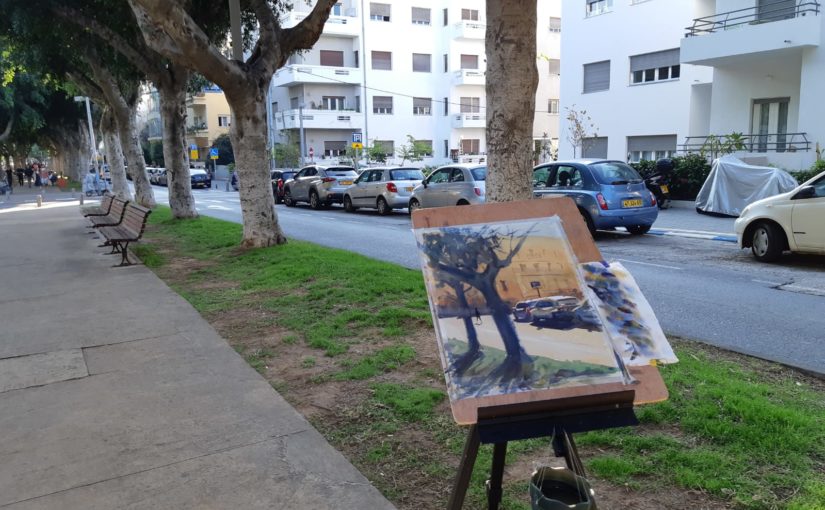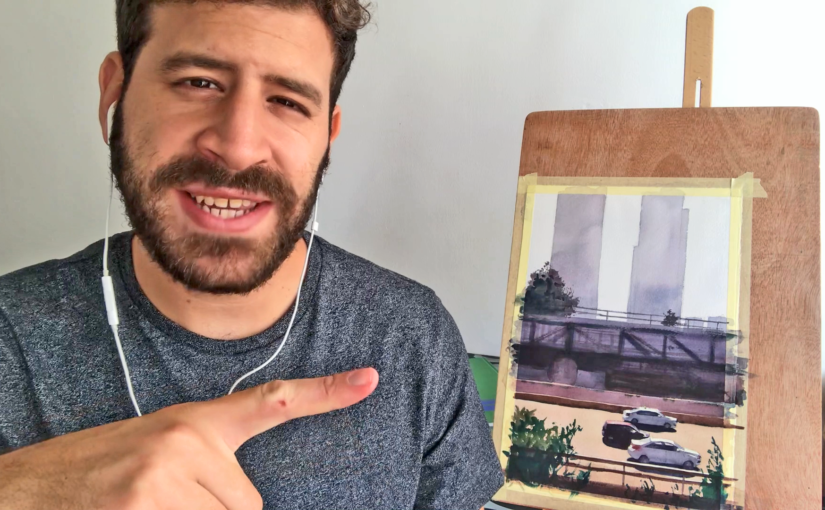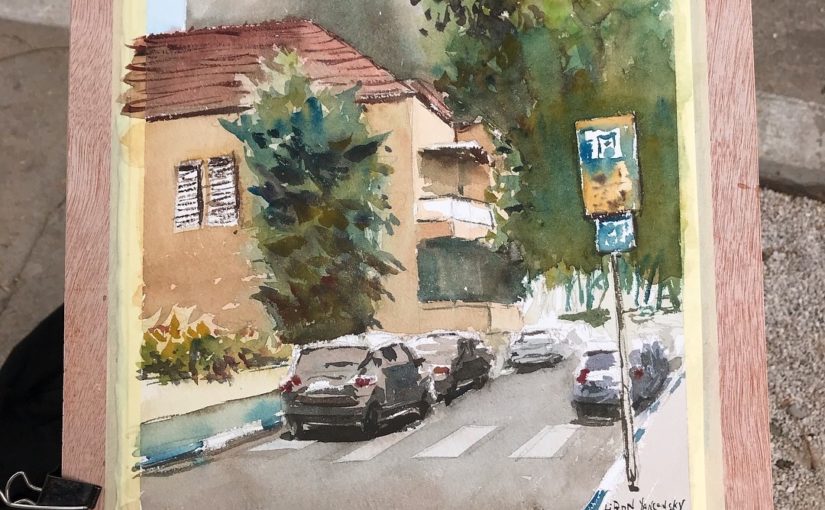Podcast: Play in new window | Download
Hi there! Today I wanted to share my experience of painting plein-air after a relatively long break!
Plein-Air Painting
So there’s been about a 1-2 months period when I barely got to paint outside.
If you’ve been following me for a while, you probably know just how important I think plein-air and painting on location is.
In my opinion, it’s a crucial ingredient in turning your paintings from good to amazing. Nothing can beat that spontaneity and full visual perception of being outside, in front of your scene.
After doing it for a while, photos start to feel a little flat and boring.
But Then I Took a Small Break From Plein-Air
So as I mentioned – I took a small break. And the result fascinated me.
In the beginning, I felt a little rusty, as expected. But it’s not like I took a full break from painting. I’ve been actually painting a lot – inside.
So here’s the fascinating part – I could feel just how much sharper my instincts became. I could immediately recognize how my composition was more on point. How better prepared I was to tackle the subject.
Another interesting feeling I had was that of slowing down. I felt like I’m deliberately working slower than usual, and I still maintain the same control (and you know how sometimes with watercolors – you have to be fast!).
Conclusion
So over all this was a big experience for me. It’s something I haven’t had in a while.
I hope you enjoyed reading about it, and perhaps this resonates with you, regarding plein-air, or anything you may have taken a break from.
Let me know in a comment below – did you ever experience something similar?
And now – it’s time for the Artist Corner.
Artist Corner
Today I talked about Andy Evansen.
Andy’s an impressionistic painter based in the US. His style is fairly minimalistic, yet has a strong sense of realism.
He started painting in the mid nineties, and studied under some of the greats, such as Skip Lawrenc, Eric Wiegardt, and my favs – Alvaro Castagnet and Joseph Zbukvic.
Here is his website, where you can see some of his work: http://www.evansenartstudio.com/
And here’s where you can find me
Check out my YouTube Channel – Liron Yanconsky
Or ask me questions on Instagram – @LironYanIL or Snapchat – @LironYan3
I hope you enjoyed this one. Take care, and we’ll talk again really soon,
– Liron








